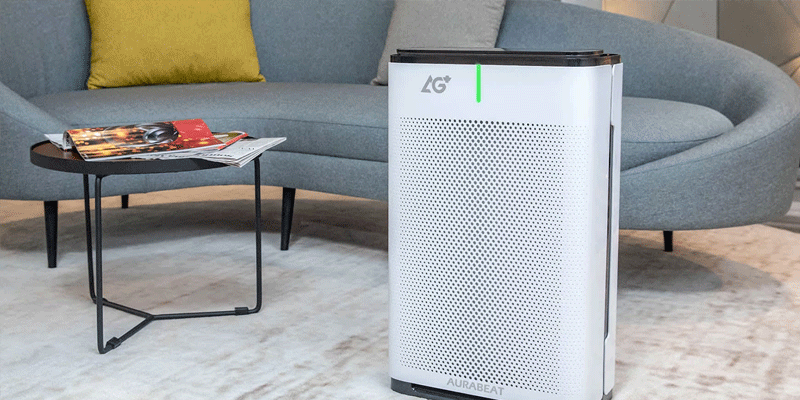
The air in your home is cleaner than the air outside, so it may seem like you don’t need to worry about cleaning and purifying your air. But you probably spend most of your time indoors, and with the right equipment and a little knowledge about how to choose which system is best for your home, you can breathe easily.
So what’s the difference between an air purifier and an air scrubber? And why would you want one or the other? Let’s start with some background information.
Air Purifiers
Although it sounds like a complicated process, all an air purifier does is trap particles before they enter your lungs. In order to do this, there has to be a fan that draws in dirty air from elsewhere in the room and sends it through a filter. The filters come in three varieties:
Permanent Filters: You change them as often as you need to, which could be anywhere between once a month and once every two years, depending on the manufacturer’s recommendations and whether or not anyone in the home has asthma or allergies.
Electrostatic Pre-Filters: These are reusable filters that come with an adhesive side that sticks onto your central air system’s permanent filter. They need to be replaced about once a month, but if any large particles get stuck, they’ll have to be taken out of the system and cleaned by hand instead of being thrown away.
Fine-Particle Pre-Filters: Unlike electrostatic pre-filters, these aren’t sticky. They need to be changed about once a month and may need more frequent attention if anyone in the house suffers from allergies or asthma. Still, these pre-filters catch smaller particles than electrostatic filters do, so they don’t have to be replaced as often.
Central Air Scrubbers: These systems work on similar principles as air purifiers, except instead of just one section where your central air system draws in dirty air and sends out clean air, there are several stages that draw in dirty air.
First, it goes through a pre-filter that removes larger particles like hair and lint; then it’s cleaned by activating carbon powder that is packed into special cartridges. Finally, the activated carbon and any other impurities adhere to plates coated with titanium dioxide, which is a chemical that reacts with light to break down contaminants.
These systems do reduce most types of pollutants and odors in the air, and they also capture up to 99% of all particles one micrometer or larger.
The main drawback is the high cost: they’re often expensive, and they include both an initial installation fee and a monthly maintenance fee that covers changing carbon plates every six months or so. Because they use such powerful filters, it’s also recommended that you not run central air scrubbers if anyone in your home has asthma or another respiratory condition.
Air Scrubbers
An air scrubber does essentially what an air purifier does: scrubs the air clean. However, it does this by using ozone technology to break down pollutants into their base elements.
That means that instead of trapping particles in a filter, air scrubbers are more effective at destroying pollutants. It’s also not recommended for homes with anyone suffering from respiratory conditions.
The drawback to this system is the slight risk of side effects like eye and throat irritation, asthma attacks, or even an increased risk of cancer if you have ozone scrubbers installed throughout your home for several years. However, you can lessen these risks by not using the device when no one is at home and making sure it doesn’t run overnight while everyone’s sleeping.
The Main Differences Between Air Purifiers and Air Scrubbers
The main difference between air purifiers and air scrubbers is that air scrubbers use ozone technology to control pollutants, while air purifiers simply trap particles before they enter your lungs. For this reason, if you live with someone who has asthma or another respiratory condition, an air purifier might be the better choice for your home.
If you’re more concerned about removing odors from your home than removing visible particles from the air, then an ozone-based system like an air scrubber would be a good choice. If visible particles are one of your concerns, as well as smells, then a pre-filter-based system would be more helpful.
How Can I Choose Which Is Best?
An air purifier produces cleaner air but doesn’t destroy the pollutants already there, so it’s good for people who have asthma or allergies. An air scrubber creates cleaner air but breaks down some particles, so it’s perfect for families who don’t have anyone with respiratory conditions.
The best way to choose is to look at your home specifically. You can find out exactly how much of each type of pollutant is in your area by contacting the EPA, and if you want purer air overall, then an air purifier will be more effective. However, if someone in your family has asthma or another respiratory condition, then an air scrubber would be better because it’ll destroy rather than just trap allergens and other elements that make breathing difficult.
If you’re unhappy with the quality of the air where you live, there are a number of things you can do. The most effective option is to install an air scrubber throughout your home; another helpful move would be to install an air purifier in the room where you spend the most time – or even as part of your HVAC system. Finally, you could simply try opening up windows for some fresh air on days that aren’t too polluted.
Whatever choice you make will be better than breathing dirty air on a regular basis! If you are located in or around the Austin, Texas, area, reach out to the team of experts at Austin AC today. We can provide you with a free estimate on services and use only the highest quality of materials available to the greater Texas area.
